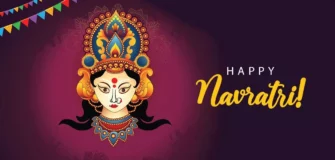Union Cabinet Grants Classical Language Status to 5 Languages
Share

Honouring the rich linguistic heritage of India, the Union Cabinet, headed by Hon’ble Prime Minister Shri Narendra Modi, has decided to accord the status of Classical Language to five prominent Indian languages: Marathi, Pali, Prakrit, Assamese, and Bengali. This would be a crucial decision to preserve the cultural and historical essence of the languages and give future generations access to their deep-rooted tradition of language and speech.
This new recognition is part of a larger outreach by the government towards celebrating and protecting India’s diversified cultural landscape. Status as a Classical Language recognizes languages that come with a rich history, literary traditions from olden times, and cultural importance. According to this new recognition, Marathi, Pali, Prakrit, Assamese, and Bengali join a long list of Indian languages such as Sanskrit, Tamil, Telugu, Kannada, Malayalam, and Odia that have earlier been recognized with this honor.
This status is essential to these languages because it will result in many benefits, such as the increase in the amount of funding towards its research and promotion, an institute dedicated to studying each language, and their academic curriculums wherein these languages would be taught. The scholars and linguists would get to work further into the literary and historical works corresponding to these languages.
Recognition is not symbolic. It plays a fundamental role in safeguarding and promoting linguistic pluralism in India – the only identity that defines it. That corpus of knowledge about culture, from philosophy texts to ancient literature, folklore, and all else, will be preserved through the preservation of those languages it is intended.
Marathi, Pali, Prakrit, Assamese, and Bengali: Legacy Abounding
Each of the newly granted Classical Languages has helped define Indian history and cultural heritage. Marathi is spoken primarily in the state of Maharashtra and has been important to literature and culture for centuries. Pali was an ancient language most commonly associated with Buddhist writings and teaching, though Prakrit can be conceived of as a group of Middle Indo-Aryan languages, much of Jain and Buddhist literature being extant.
Assamese is the language of Assam, with a literary history predating early medieval times. Significant contributions to the Bhakti movement were made in Assamese. Bengali is widely spoken in West Bengal and Bangladesh and has an excellent literary heritage. Rabindranath Tagore and Sarat Chandra Chattopadhyay count among Bengali’s two most iconic personalities who added substantially to its prestige.
Strengthening India’s Cultural Fabric
The classification of these five languages as Classical Languages is the new commitment of the Union government towards the celebration of India’s linguistic variety. Recognition will finally give these languages much more of an opportunity to blossom further and enrich India’s vibrant cultural landscape. It is a step toward making sure that these languages continue to be studied, appreciated, and preserved for generations to come.
Such hope is cherished as the government continues to pursue this initiative, for one can only envision how these recognition efforts will inspire successive generations to get closely linked to their linguistic roots and nurture India’s mosaic culture in the fullest senses.







